
5 minute read
SUPERLATIVE Manufacture
AT EACH AND EVERY STAGE OF WATCH PRODUCTION, ROLEX UPHOLDS ITS PERPETUAL PURSUIT OF EXCELLENCE
Hans Wilsdorf, the founder of Rolex, was driven by a vision of making watches that people could rely on and developed a wristwatch in the early 20th century that was capable of keeping up with the movement of individual wearers and the increasing pace of their daily lives. After more than a hundred years, Wilsdorf’s vision has become a reality and continues to inspire the very foundations of watchmaking.
Overcoming Challenges
Three major challenges in watchmaking, namely precision, waterproofness, and selfwinding were taken on by Rolex following its inception. By championing these aspects of watch creation, the Rolex founder revolutionised the wristwatch and made it into a genuinely priceless instrument that can be used daily. The first was the challenge of precision, which Rolex overcame in 1914, by receiving a Class ‘A’ precision certificate for a Rolex watch. The timepiece successfully passed extremely rigorous tests carried out over the course of 45 days.
The second was the challenge of waterproofness. Rolex confronted this by unveiling the Rolex Oyster case in 1926. Hermetically sealed and able to provide optimal protection for the movement through an ingenious patented system of a screw-down bezel, case back and winding crown, Wilsdorf considered the Oyster as “the most important invention regarding watches of recent years.”
The third was the challenge of self-winding. In 1931, Rolex registered a series of patent applications on a self-winding mechanism with a free rotor called ‘Perpetual’. Later becoming the standard adopted by the entire industry, the perpetual rotor allows the
By Maria Zarah Gregorio Viado
movement to wind itself while the watch is being worn, as every movement of the wrist turns the rotor which drives a mechanism that winds the mainspring.
With a desire to always push beyond the limits, Rolex gradually integrated and developed all areas of watchmaking expertise to achieve total industrial independence. By doing so, the brand is able to impose its own rules and perpetuate its quest for excellence. This choice of autonomy has shaped the identity of the brand, putting it at the crossroads of pure tradition and state-of-the-art technology. To date, Rolex has four production sites in Switzerland, with a fifth one already in the planning stages.
Fundamental Qualities
Firmly guided by the very principles laid out by its founder, Rolex has since come to signify superior watchmaking. To date, the esteemed manufacture proudly and capably guarantees the performance and reliability of every watch that passes through its workshops. Every Rolex watch is designed, produced and tested with constant attention to the tiniest of details. This ‘superlative’ approach is expressed through eight fundamental qualities that characterise every Rolex watch.
Foremost in this list of qualities is precision. Chronometric precision holds a central place
1. Final visual and functional check of an Oyster Perpetual Datejust 41
2. Exploded view of the Oyster case, 1926
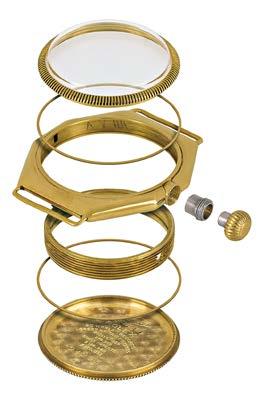
3. ‘Class A’ precision certificate attributed to a Rolex wristwatch by the Kew Observatory in 1914
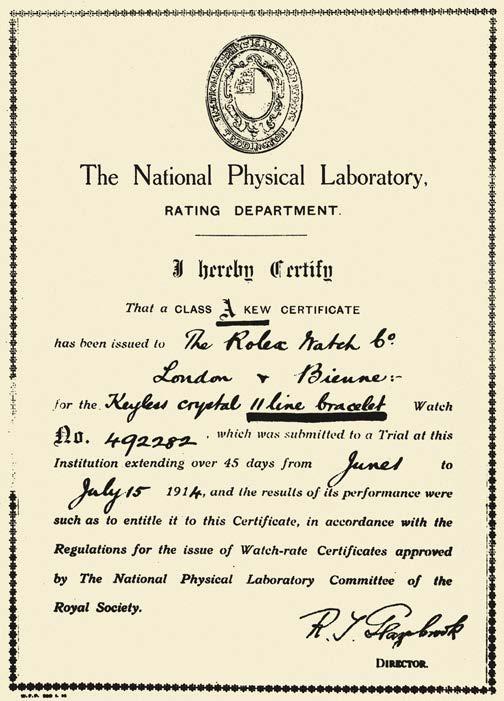
4. Winding system via a Perpetual rotor, presented by Rolex and patented in 1931 with the calibre that it equips, underneath in the history of the brand as a Rolex became the first wristwatch to obtain a certificate for chronometric precision from an official rating centre in 1914. Today, every Rolex movement is certified by the Swiss Official Chronometer Testing Institute (COSC) before it is cased. In order to be declared a ‘Superlative Chronometer’, the finished and assembled watch must then pass the Superlative Control tests. This certification, which is exclusive and unique to the Rolex Manufacture, guarantees an exceptional precision of –2/+2 seconds per day. The Superlative Chronometer certification is symbolised by the green seal and is accompanied by a five-year international guarantee.
Second is the quality of waterproofness, including sealing against dust, which is a constant focus for innovation. Since the unveiling of the Oyster in 1926, Rolex has heavily invested on research and development; this has successfully resulted in the creation of the Twinlock (1953) and Triplock (1970) crowns, as well as the Ringlock system (2008) that have further optimised the resistance of Rolex watches to all forms of intrusion. By controlling the entire working environment at every stage, Rolex ensures the exemplary impregnability of its watches.
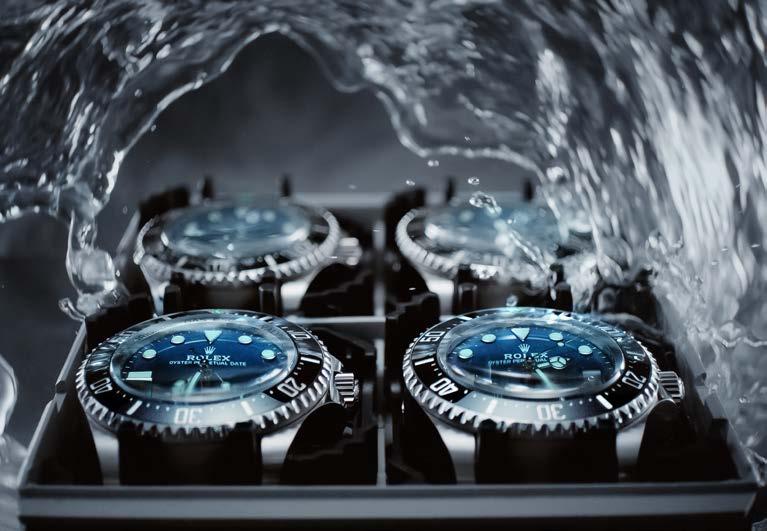
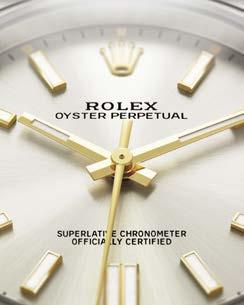
In a final guarantee of the incomparable waterproofness of every Rolex, all watches are tested once again at the end of the production process in the Superlative Control’s hyperbaric tanks.
A corollary of precision and waterproofness, autonomy was an essential factor in the development of the wristwatch for Hans Wilsdorf and is the third fundamental quality of a Rolex. This is why in 1931, Rolex revolutionised the watchmaking world with the invention of a self-winding system via a Perpetual rotor. Since then, it was the movements of the wearer that powered the watch. Today, the autonomy of Rolex movements when the watch is off the wrist can reach 72 hours.
Next is robustness, one of the most difficult qualities to predict in the long-run. Once a watch leaves the manufacture, it will inevitably be subjected to harmful elements in the outside world. To this end, the brand devotes extreme care to raw materials and their machining. Similarly, Rolex constantly increases the shock resistance of its movements, as seen in the Paraflex shock absorber, which protects the regulating organ, and was introduced in 2005.
Rolex is also on a constant quest for the greatest simplicity in order to achieve optimal watch performance, increase reliability and optimise
By
the watch’s personality. That is why their design, production, assembly and rigorous testing involve the use and application of the most advanced technology, coupled with exceptional craftsmanship.

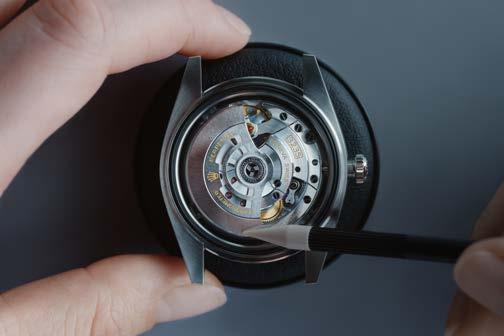
Lastly, durability is as much about the movement as it is about the watch case and bracelet. To combat wear and tear, Rolex has developed exclusive lubricants, oils that are able to remain effective through varying temperatures, over several years. They are essential to the smooth running of the movement and contribute directly to the reliability and long-term performance of Rolex watches. As a result, this reduces the frequency of maintenance.
These eight characteristics symbolise the very heart of the Rolex brand and ensure the high quality of all timepieces that leave the manufacture. Furthermore, each Rolex watch is covered by the Superlative Chronometer certification redefined by Rolex in 2015. The Superlative Chronometer status is symbolised by the green seal that comes with every Rolex watch and is coupled with an international five-year guarantee.
5. The waterproofness of each finished watch is tested in a hyperbaric tank
6. Each Rolex watch is distinguished by superlative performance
7. Polishing of a middle case
8. Testing of the winding system via a Perpetual rotor production methods. This is in part due to the conviction that mechanical simplification is a measure of performance and reliability. Following simplicity is craftsmanship, which the brand considers the expression of the deep reflection and meticulous care devoted to every stage of production. Aesthetic emotion is sought in the smallest of details by optimising the geometry of the watches and the human touch that allows them to take shape. Designers, polishers and gem-setters play a great part in allowing beauty to emanate from every angle.
The seventh fundamental quality is comfort, as symbolised by the bracelets and clasps that play a part in the unique pleasure of wearing a Rolex watch. Their carefully considered ergonomics form an integral element of









